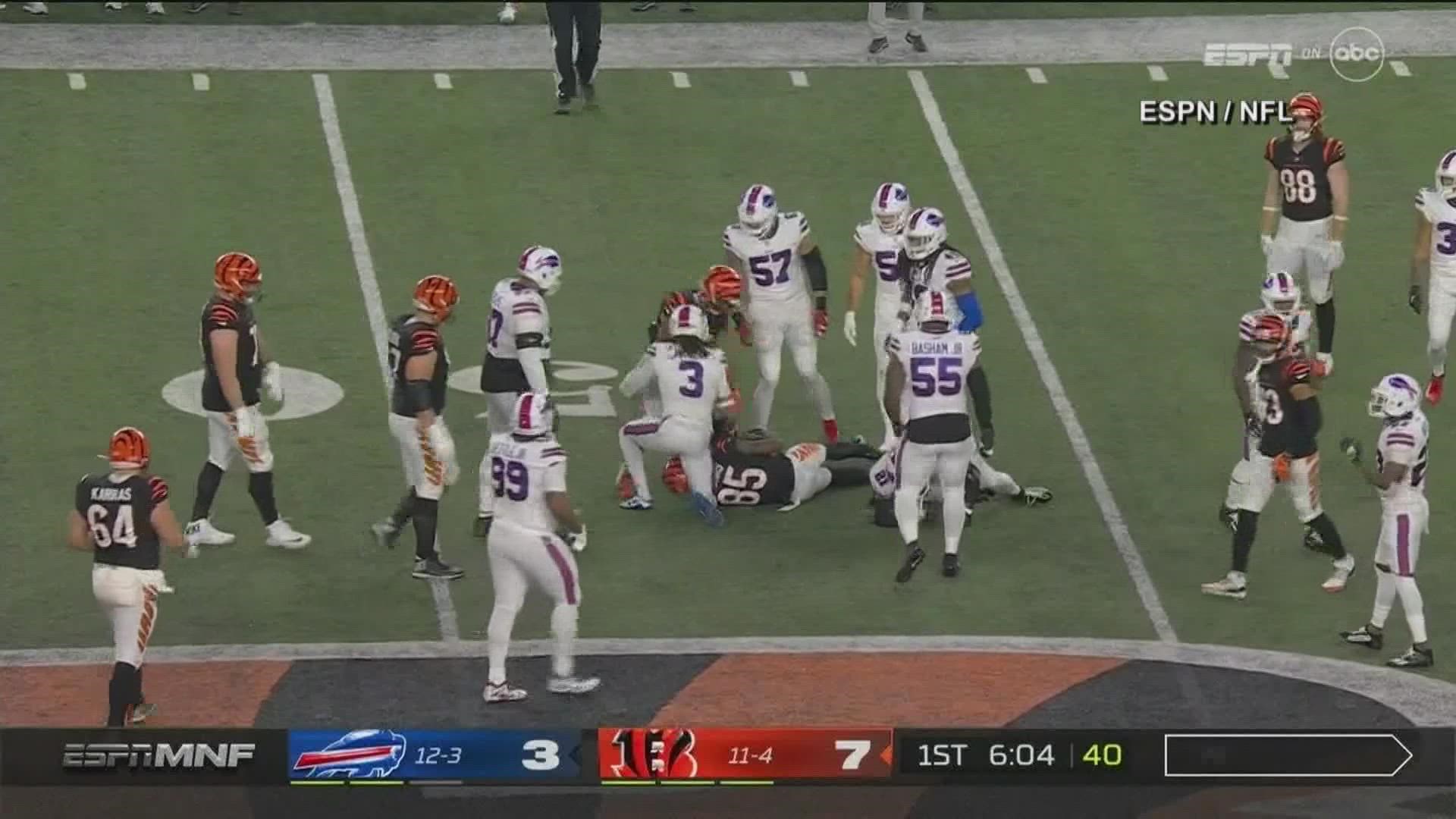ODESSA, Texas — People all over the U.S. have been keeping Buffalo Bills Safety Damar Hamlin in their thoughts and prayers after his sudden collapse on the field-a collapse that's nearly unheard of.
“It’s obviously shocking to see such a young person with a sudden collapse and it’s not very common,” said Dr. Manohar Anigrekula, Cardiologist at MCH ProCare Odessa Heart Institute.
Hamlin collapsing was possibly because of Commotio Cordis, a blunt force trauma injury to the heart.
Only 20-30 cases are reported annually in the U.S. and those that are usually amongst young athletes, according to Dr. Anigrekula.
"This is obviously common in young athletes and this has nothing to do with their cardiac condition they aren’t born with any errors. What happens is when they get a sudden blow from an object from outside. The word commodio stands for agitation so if you get hit with a forced object in the area of the heart the pericardium and particularly at certain timing of the cardiac cycle the heart goes into arrhythmia, where the heart stops beating and pumps stop pumping so the person collapses," he said.
Dr. Anigrekula said the medical team on the field stepping in immediately to help potentially saved his life.
"The key is to get the help in a prompt way and that emphasizes the importance of having AED available in these fields. Any kind of players in the field so they can get the prompt help," he said.
With the survival rate being a little more than half, Hamlin being in critical condition gives him a fighting chance.
"The survival rate even as of now is 58% so you can imagine 40% of people die from this, and this catch is to get that help very promptly and if you don’t get it within three minutes you’re actually facing someone who is brain dead, so they may be surviving but they may not have a functional life," said Dr. Anigrekula.
"I think the biggest advantage is age is on his side he had relatively quick health so the establishment of oxygenation and circulation is in his favor but what we need to worry about is infection and so forth when you’re in ICU, which can be secondary causes, which can still be putting him in a critical condition but everything needs to be monitored in the next few days," Anigrekula said.

